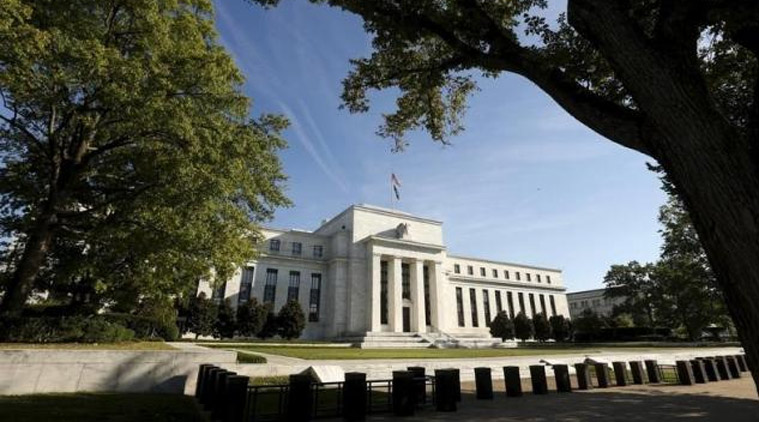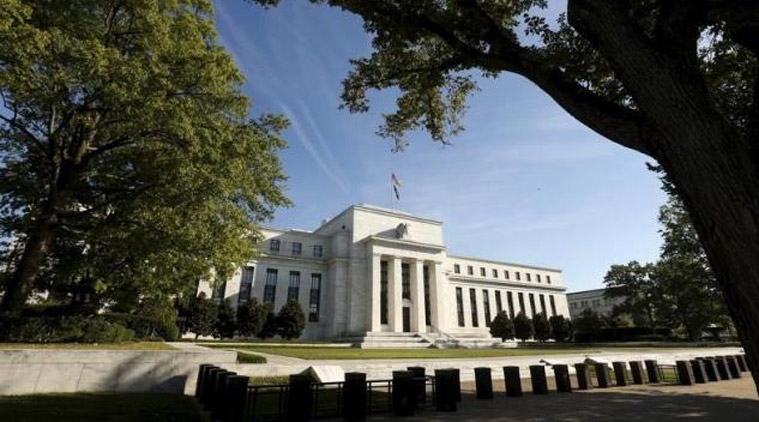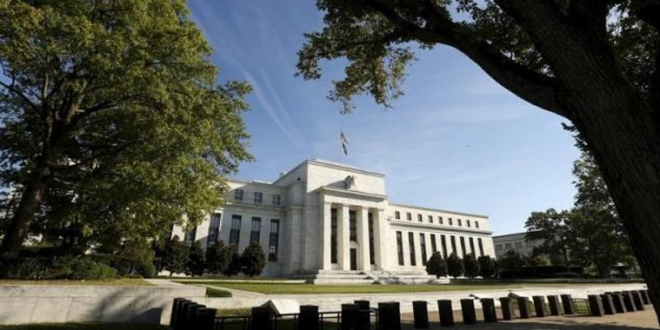
 The central bank’s target for the federal funds rate _ the interest that banks charge each other _ has been at a record low between zero and 0.25 percent since December 2008. (Source: Reuters)
The central bank’s target for the federal funds rate _ the interest that banks charge each other _ has been at a record low between zero and 0.25 percent since December 2008. (Source: Reuters)
In the end, the most remarkable thing about the US Federal Reserve board’s decision to raise its interest rate — the first hike since 2006 — was that it was in line with expectations. Markets across the world, as well as in India, shrugged off the development, which could mean capital moving out of several economies and into the US. Britain’s FTSE 100 gained 1.7 per cent, while Germany’s DAX rose 1.8 per cent and France’s CAC 40 jumped almost 2 per cent. Indian indices carried on in the same vein, with both the BSE Sensex and the broader NSE Nifty rising by 1.21 per cent each. On the face of it, a Fed rate hike should be a negative development for emerging market economies like India since a capital outflow should lead to a depreciation in the domestic currency. However, even the rupee rallied against the dollar, gaining 23 paise, although the dollar did strengthen across a broader spectrum of currencies by almost a percentage point. Overall, developments after the rate hike show two things. One, clear guidance — the Fed had signalled a possible rate hike in August — helps markets price in the shock. Two, the Indian economy is relatively well placed in the global scenario and robust enough to handle such shocks.
But the positive market reaction should not take away from the momentous shift implicit in the rate hike. A 25 basis point increase over the past decade only underscores its significance. It essentially means that the US economy, the global bellwether, has successfully extricated itself from the clutches of the great financial crisis of 2008. The Fed statement declares that it will henceforth be accommodative. In other words, it is expected that 2016 may see three, or even four, similar hikes. The fact that the Fed as well as the markets expect the US economy to be able to grow despite higher borrowing costs is likely to have a salutary effect on the rest of the global economy and other central banks, especially in the euro region, which are still practising a cheap money policy.
Where does that leave India? For the longest time the Indian economy’s strength — its lack of integration with the world economy — has also been its weakness. This has been both a cause for India’s slower than desired growth, as well as the reason for its relative insulation from financial contagion. Irrespective of how the markets performed on Thursday, there will be a negative impact on the movement of capital, as well as the rupee-dollar equation in the immediate term. However, India has comfortable foreign exchange reserves to weather the storm. The larger concern still emanates from domestic supply-side constraints — be it the struggling agriculture sector or massively deficient infrastructure. The fact that the GST is now delayed for another financial year underscores the policy challenges that continue to hold India back.
![]()
Source: New feed






